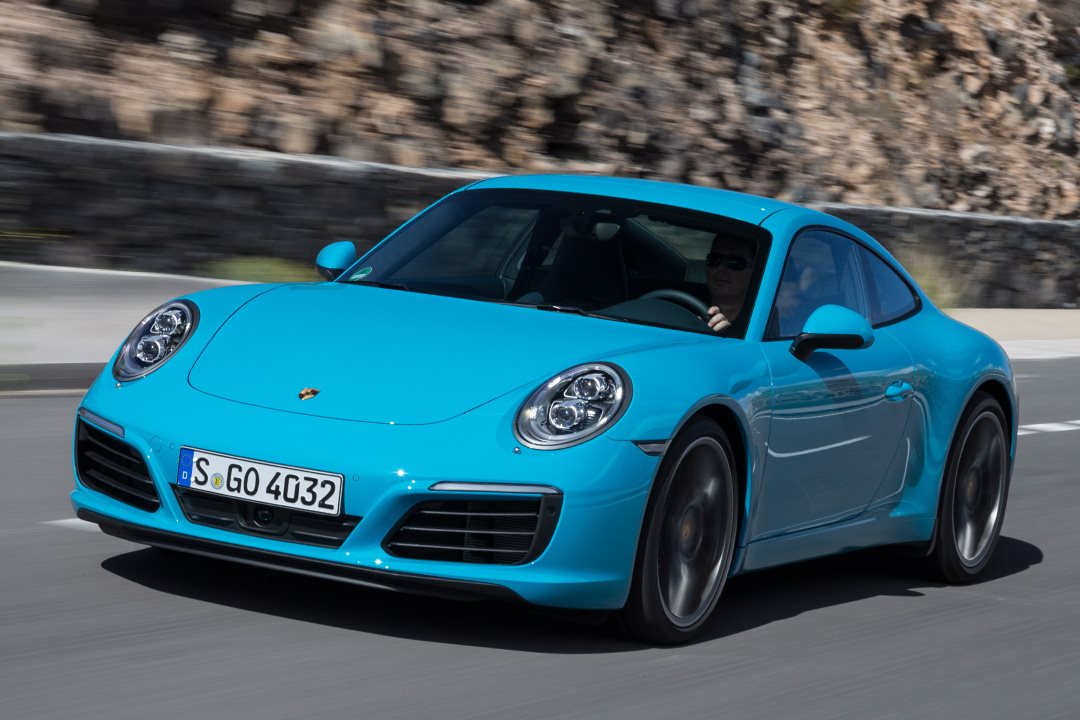The Porsche 911 Carrera and Carrera S will ditch their high-revving 3.4- and 3.8-litre naturally aspirated boxers and switch to a smaller boosted engine.
The mostly new twin-turbo 3.0-litre flat six is more powerful than ever and more efficient than before.
WHAT IS IT? The latest version of Porsche’s rear-engine and rear-drive 2+2 sports car icon, due to go on sale in Australia next March.
WHY WE’RE TESTING IT To find out if Porsche’s new engine is truly 911-worthy. This is an important question. After its intro in the basic Carrera and Carrera S coupe and Cabriolet, the new twin-turbo 3.0-litre will eventually power almost every model in the extensive 911 line-up.
MAIN RIVALS There are alternatives to the 911, rather than direct rivals. The shortlist could include the bottom end of the mid-engined Audi R8 line-up and the front-engined Jaguar F-Type. But Porsche’s own Cayman will also appeal to the kind of driver who appreciates the 911.
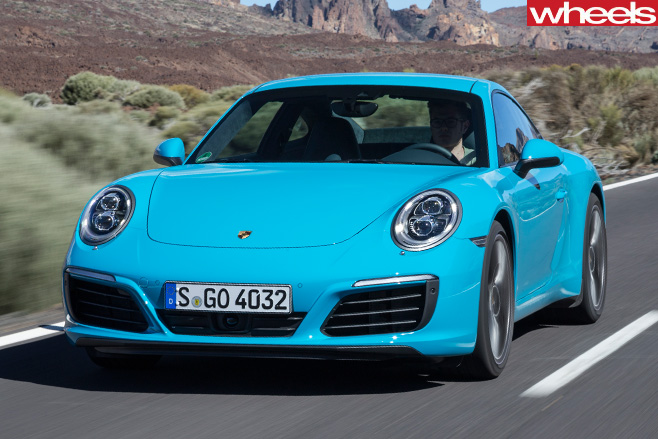
PLUS: Power and precision; handling and ride; brakes and steering; engineering excellence end-to-end MINUS: Really expensive options, and too many of them; Cabriolet too obviously lacks stiffness of the tin-topped 911
THE WHEELS REVIEW IT’S where the engine is, not what the engine is, that makes the 911 what it is. So while next year’s Carrera and Carrera S will have a boosted boxer six, the mostly new 3.0-litre twin-turbo engine doesn’t alter the fundamentals of the driving experience one little bit.
That’s because, as ever, the engine is aft of the rear axle. The consequently butt-biased weight distribution accounts for the 911’s unmistakable dynamic flavour; the twerky way it rides road heaves and dips, and its clenching rear-end grip accelerating out of slow corners, for example.
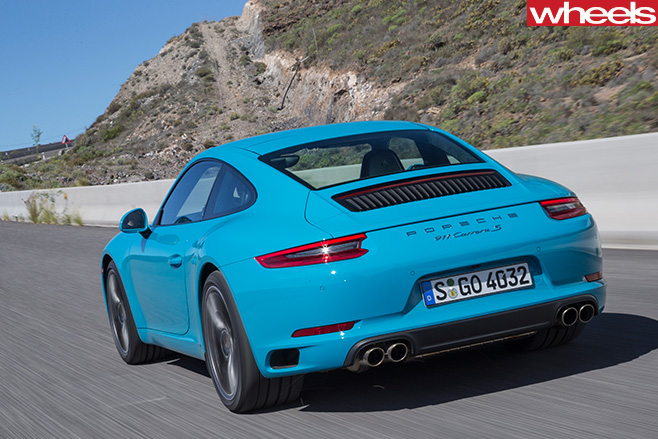
It could have been more. According to director of boxer engine development, Thomas Wasserbäch, the engineering rule of thumb when turbocharging an engine is that it adds around 30kg. Porsche shaved weight where it could to cut this almost in half. The overall weight of the new Carrera and Carrera S is up only 20kg compared to the cars they replace.
The horizontally opposed layout of the 911’s six demands a short piston stroke, explains Wasserbäch. Otherwise it would become too wide to fit. The 3.0-litre twin-turbo has a new crankshaft with a 76.4mm stroke, 1.1mm shorter than in the existing 3.4- and 3.8-litre atmo engines. The 3.0-litre’s 91.0mm bore is 6.0mm less than the 3.4-litre and 11.0mm less than the 3.8-litre.
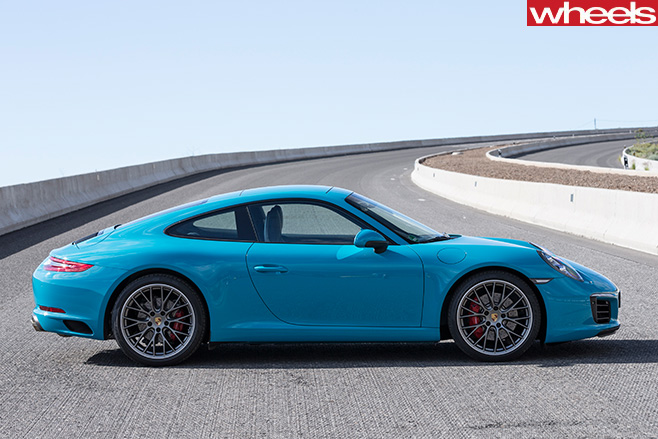
While the 3.0-litre’s crankcase is an evolution of the closed-deck design used in Porsche’s current atmo engines, its cylinder heads are completely new. The key change is a relocation of the direct fuel injectors close to the centre of the cylinder bore, very near the spark plugs. Making space for both injection and ignition hardware meant widening the angle between inlet and exhaust valves.
The static compression ratio of the 3.0-litre is 10:1, high for a turbocharged engine. Porsche chose this combination of capacity and compression, says Wasserbäch, to provide more immediate response to the throttle than a smaller engine with larger turbochargers could ever be made to deliver. Similar thinking is to be seen in the recent twin-turbo V8s of AMG and Ferrari.
Similar to those engines, Porsche’s new twin-turbo six is a revver. The 3.0-litre spins to 7500rpm, only 300rpm less than the atmo engines it supersedes.
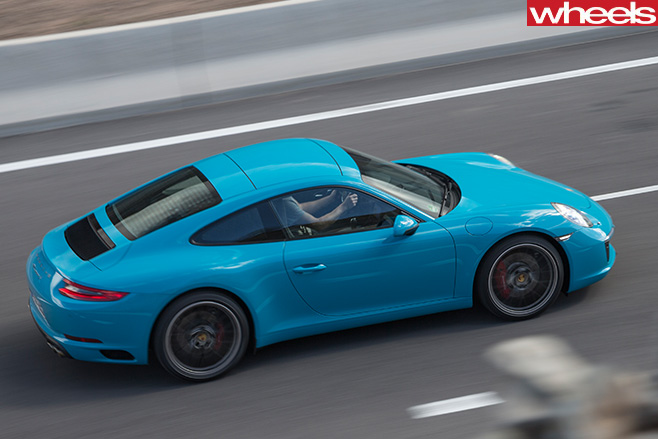
But the turbo-fattened torque curves of both versions of the new 3.0-litre means the power difference is even greater at low and middling engine revs. Porsche takes advantage of this with the calibration of the optional PDK seven-speed dual-clutch gearbox. Earlier upshifts further magnify the inbuilt efficiency advantage of the smaller turbo engine.
Naturally, the new engines achieve lower consumption in the European combined cycle test. But they also deliver better efficiency on the road. According to Wasserbäch, Porsche’s real-world testing indicates consumption 0.5 to 1.0L/100km lower than the current non-turbo engines in typical driving conditions.
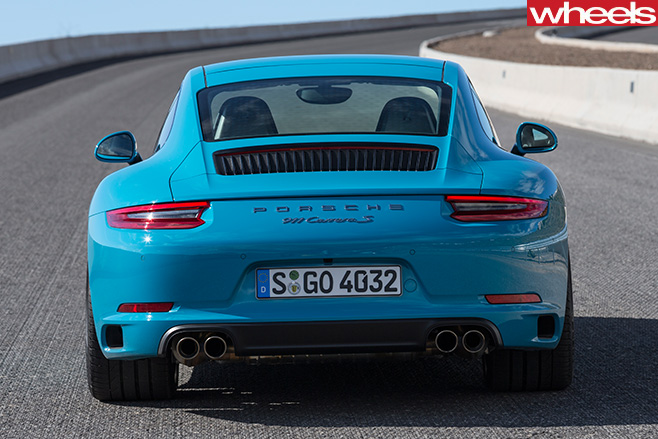
So, in pretty much every measurable way the 911’s new engine is an improvement. But do the metrics mislead? Is the twin-turbo 3.0-litre actually a less engaging, less satisfying experience than today’s atmo engines?
Not at all. But the new engine does subtly alter the car’s character…
Most of our time at the international launch was spent in a Carrera S with PDK, the most popular 911 version in Australia. The 309kW engine has a lot of low-rev muscle. Easy-to-access thrust never made any car worse, and the 911 is no exception. The flexibility comes at practically no cost to the twangy top end expected from a 911 Carrera S. You really don’t miss the extra 300rpm of the atmo engines. What is different is that the twin-turbo 3.0-litre is a more able engine when taking it easy. It’s happy, and deceptively fast, even when driven lazily.
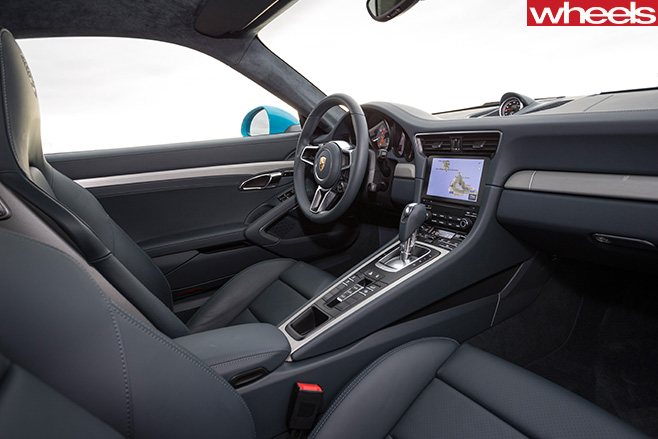
Less satisfying was the Carrera S Cabriolet with optional sports exhaust (central pipes are the visual giveaway). Top-down and with the switchable exhaust flaps open, the new engine was hoarse, verging on coarse, at low revs. It sounded better with the exhaust flaps shut, in fact. The whine of the turbos is clearly audible in the roofless 911, as are the entertaining crackles and pops the sports exhaust emits when going hard.
The twin-turbo 3.0-litre brings perhaps even more change to the appearance of the 911 than the way it drives. Supplying the pair of intercoolers buried inside the rear guards dictated a complete redesign of the car’s rump. Most obvious of the changes is a bold new air intake grille. Behind this is an active spoiler, which also guides ambient-temp air over the air-to-air intercoolers. Once passing through the intercoolers, air exits through ducts sited in a low-pressure area in the bumper, just aft of the rear wheels.
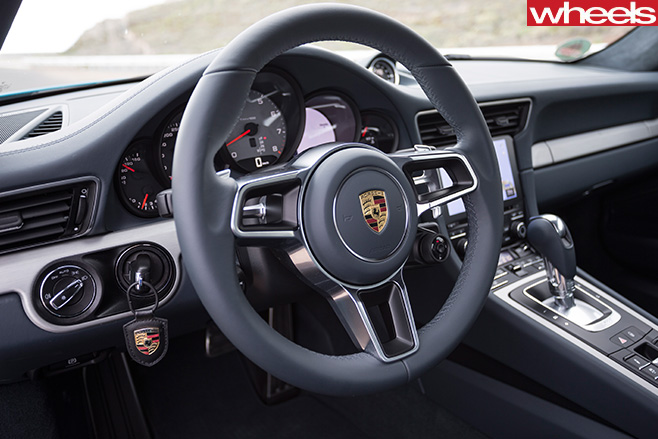
There are changes for the 2016 Carrera and Carrera S unrelated to the new engine, too. Porsche’s PASM adaptive damping system, with a ride height 10mm lower than before, becomes standard. There’s a lovely new standard sports steering wheel, and an improved infotainment system. The car also gains some tech familiar from much less expensive Volkswagen Group cars, notably automatic post-collision braking. These extras go some way towards justifying higher prices. The new 911 Carrera is $217,800 and the S is $252,800. Choosing the Cabriolet versions increases these prices by $21,500. Adding PDK costs $5950, Sport Chrono Package $4790 (with PDK) and sports exhaust $5890.
Prices like these mean the new Carrera and Carrera S will remain as exclusive as ever. But they are also as desirable as ever. The twin-turbo 3.0-litre is a properly Porsche engine that’s right at home in the 911’s legendarily loony layout.
SPECS Model: Porsche 911 Carrera S with PDK Engine: 2981cc horizontally opposed 6, dohc, 24v, twin turbochargers Max power: 309kW at 6500rpm Max torque: 500Nm at 1700 to 5000rpm Transmission: 7-speed dual-clutch automatic Weight: 1460kg 0-100km/h: 3.9sec (claimed) Fuel economy: 7.7L/100km (European Combined Cycle) Price: $258,750 On sale: March


